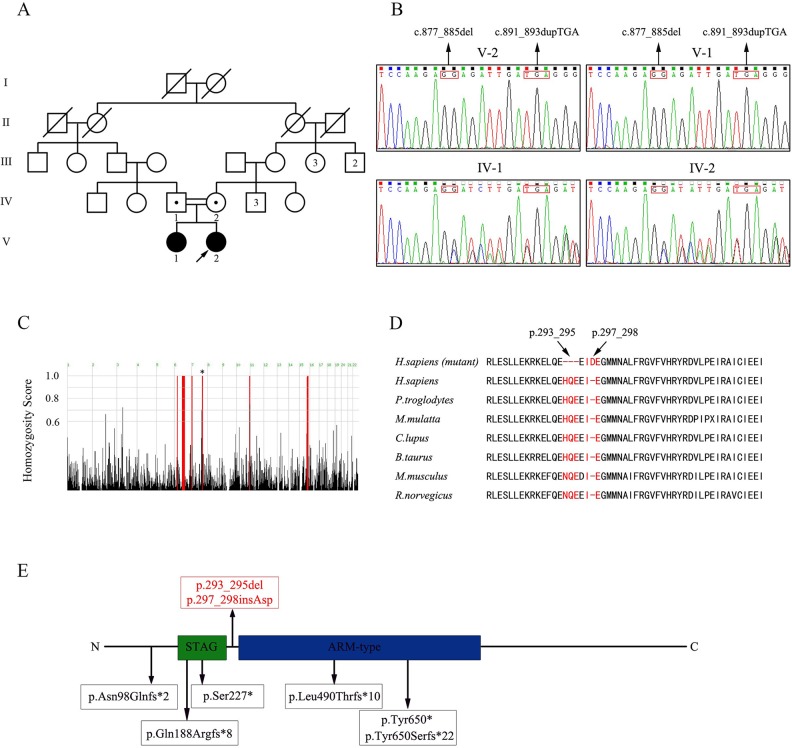Figure 1.
Pedigree of the consanguineous Han Chinese family with POI-associated STAG3 variants. (A) Two second cousins (IV-1; IV-2) in generation four married each other and had two daughters (V-1; V-2) with POI. The number of siblings is written inside each symbol. The proband is marked with a black arrow. Filled symbols indicate other affected members. Open symbols indicate unaffected members. Heterozygous carriers are indicated with a dot in the middle of each symbol. Numbers are allotted to the family members whose DNA samples were used in this study. (B) Based on sequence chromatograms for STAG3 (NM_001282716: c.877_885del; c.891_893dupTGA) in this family, the unaffected parents (IV-1; IV-2) are heterozygous carriers of two variants of STAG3, whereas the two affected sisters (V-1; V-2) are homozygous. (C) Homozygosity mapping of the proband. Homozygous regions with a remarkable signal are indicated in red. The asterisk indicates the location of STAG3. (D) Cross-species alignment reveals strong evolutionary conservation at positions 293_295 and 297_298 in STAG3 (NP_036579.2). (E) The STAG3 protein consists of 1,225 amino acids, including a STAG domain and an ARM-type domain. The two variants discovered in this study are shown at the top of the figure, whereas previously reported variants are displayed at the bottom of the figure.

